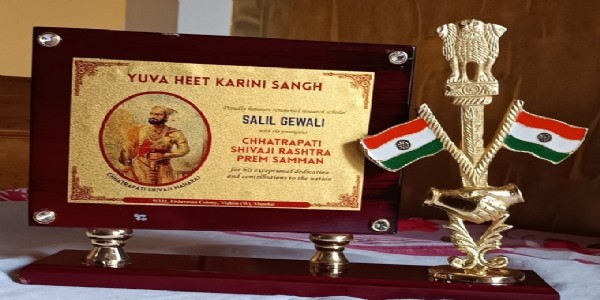Strategic asset to border areas, Rajnath Singh inaugurates Col. Chewang Rinchen Setu in Ladakh
Leh, October 21: Not only providing all weather connectivity in the region but also a strategic asset in the border areas, Raksha Mantri Rajnath Singh inaugurated the Col. Chewang Rinchen Setu (Bridge) in Ladakh on Monday. It is named in honor of Colonel Chewang Rinchan who was one of the highly decorated officers in Indian Army from Ladakh.

Speaking at the event, Rajnath Singh said that he is delighted to dedicate the bridge to the nation. He further added saying that Ladakh has tremendous potential in Tourism. Better connectivity in Ladakh would certainly bring tourists in large numbers. The Siachen area is now open for tourists and Tourism. From Siachen Base Camp to Kumar Post, the entire area has been opened for Tourism purpose.
Raksha Mantri said that India shares cordial relations with China. There are perceptional differences between both the countries on the boundary issue but the issue has been handled with great maturity and responsibly. Both the countries have not allowed the situation to escalate or go out of hand.
He further added that Kashmir is India’s internal and integral matter. Even the Chinese President Xi Jinping did not mention Kashmir in his meeting with PM Narendra Modi in Mahabalipuram. China’s recent statement for action against terror is also significant.
The bridge has been constructed at an altitude of 14,650 feet in forward area of Ladakh region. It has been built on strategically important road Durbuk Shyok Daulat Beg Oldie in sub sector north in eastern Ladakh. It is 45 km east of Line of Actual Control (LAC) with China. The bridge is 4.5 metres wide and can accommodate vehicles of 70 tonnes class. It will also reduce travel time by about half and help in development of border areas and villages across Shyok River.
The Bridge has been built by Border Roads Organisation (BRO). During the foundation of the bridge, the BRO used the micro pile technology to overcome the technological challenges in this remote area of Ladakh. The construction of the Bridge was completed within 15 working months using 6900 cubic meters of concrete and 1984 metric tons of steel.





